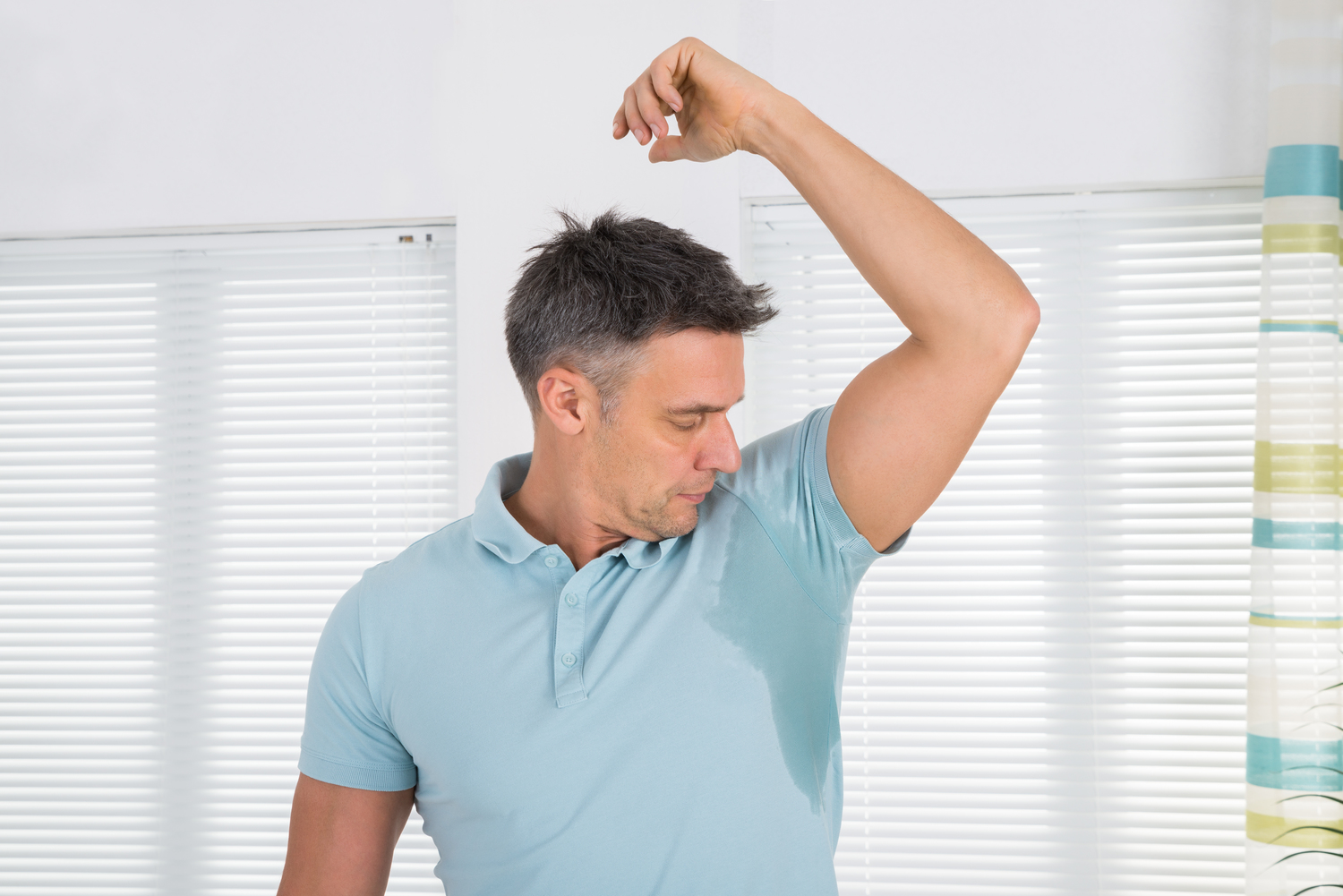
Effective Hyperhidrosis Treatments
Hyperhidrosis, otherwise known as heavy sweating, is a frustrating condition that affects the lives of many people seemingly without cause. It may be the result of overactive nerves in and around the sweat gland. These trigger a disproportionate response to outside stimuli, typically high temperatures. Hyperhidrosis symptoms include excessive sweating. Situational or biologic factors such as high stress can also act as triggers.
Hyperhidrosis is not physically harmful, but it can indicate an underlying health issue (i.e., thyroid issue, etc.) and be stressful and disruptive in your daily life. Here are a list of some hyperhidrosis treatments currently available:
1. Clinical strength deodorant
Deodorants work by attacking the bacteria on your body that produce odor when you sweat. These generally concentrate in your armpits and feed on the proteins and fats released when during the sweating process. They consume these, break them down, and release an unpleasant odor as a byproduct. Deodorants use salts to make the application area unlivable for bacteria, allowing you to sweat without stinking.
2. Prescription antiperspirant
Antiperspirants differ from deodorants in that they chemically affect the sweat glands to decrease or prevent perspiration. As such, they are categorized as a drug while deodorants are considered a cosmetic item. They are generally more effective but also more expensive. All antiperspirants include aluminum chloride as their active ingredient. However, each brand has its own unique blend and concentration level. The maximum percentage allowed by the Food and Drug Administration is 20%. Note that higher aluminum chloride concentrations are also more likely to be abrasive and irritating to the skin. They may also be more expensive and time consuming to apply. As such, jumping straight to the most powerful brand is not always advisable.
3. Botox for hyperhidrosis
Botox treatment is used to temporarily paralyze the muscles in target regions. Botox is most well known for its use in cosmetic surgery but it has also been applied to resolve a number of medical issues, including hyperhidrosis. Botox has been used to help patients suffering from neuromuscular conditions such as muscle spasms and migraines as well. When treating hyperhidrosis, Botox is administered to the under arms where it paralyzes the overactive nerves attached to the sweat glands and prevents them from sending signals. This effectively stops the sweat glands from producing sweat. Botox has only been fully tested on the underarm region, however doctors can apply it “off-label” to different parts of the body to reduce sweating. This includes places like the feet and forehead.
Botox injections are effective but comparatively more expensive. As such they should only be considered after over-the-counter and prescription alternatives have failed to produce results. Botox can also have side effects depending on the injection site. While injection under the arms is mostly harmless, injection closer to the head can cause droopy eyelids, headaches, and dryness of the eyes. Botox is considered a benign neurotoxin. While mostly safe it can occasionally cause reactions. This includes redness, bruising, or flu-like symptoms. While it is very rare, botox can sometimes spread beyond the injection sight and affect other parts of the body. This can cause weakness and fatigue as well as a host of other negative effects.
If you suffer from hyperhidrosis, consult with your doctor and try to determine which treatment method is most applicable to you. That way you can go back to your daily routine with a minimum of sweating, itching, and social discomfort.


